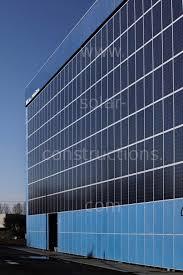Time for clean change

In a recent letter to the North Shore Times a writer proposed using ‘electrical solar panels’ instead of combustible cladding on the walls of high rise buildings (see full letter below).
We posed the following questions about the proposal (and are eagerly awaiting a response):
- Is there independent authoritative research that proves using solar panel as wall cladding is safe for the occupants of the buildings?
- what is the relative cost for solar cladding compared to fire rated cladding?
- what is the fire rating of the cladding?
- who in Australia has certified the cladding?
- where is the cladding being used in Australia?
- what is the reflective index of the cladding compared to traditional cladding?
- what colours does the cladding come in?
- what studies have looked at and certified the cladding from an Electro Magnetic Radiation (EMR) perspective, noting that the panels could be installed quite close to humans in workplaces and bedrooms.
- is it safe for these locations?
- given that there may be sections of the walls that do not receive sunlight, are there matching non-solar panels available?
- what is the carbon efficiency of manufacturing the panels compared to traditional panels?
- are these panels manufactured in Australia?
- would it be more prudent to adopt the Precautionary Principle when considering this matter?
Time for clean change
Recent reports state many high rise buildings in Chatswood score very poorly (on) energy efficiency. At the same time, over 60 buildings within Willoughby LGA have been found to have combustible cladding.
Where removal of combustible cladding is required to reduce fire risk, an obvious solution would be to install solar cladding and other exterior building materials embedded with photovoltaic cells as used successfully in Europe, Brazil and the Middle East.
Innovative renewable energy technologies must be embraced, particularly as solar panel prices have fallen up to 90 per cent in recent years, and long term running costs using renewable energy will decrease. This in turn will help reduce carbon emissions and damaging effects from climate change. At the same time it would demonstrate confidence in the local renewable energy sector, rather than going off shore, and importantly contribute to local jobs.
___________________________________________________
To become a member of CWWPA, direct deposit $20* with your name in the reference field to BSB: 032090 Acct: 548083 & complete our Membership Application. Renewing members $10. *Non-refundable and subject to meeting membership criteria.
Solar panels do burn readily and so would be unsuitable as fire-rated cladding. However vertical panels are useful in mid-winter in Sydney, making use of unshaded north-facing fences and low walls.